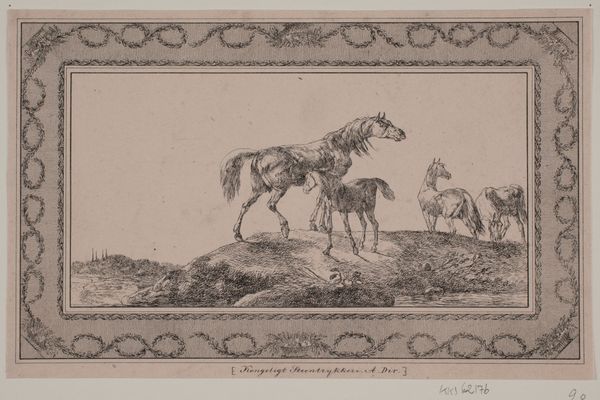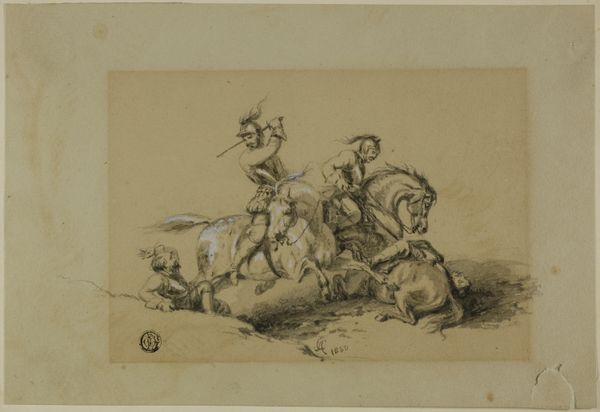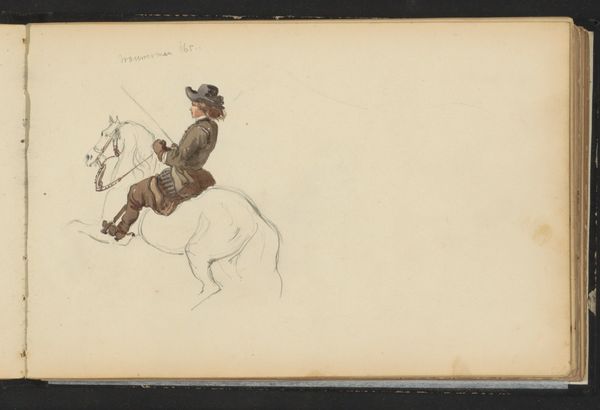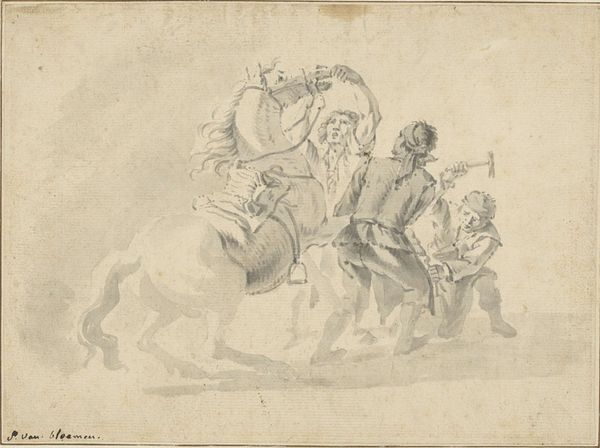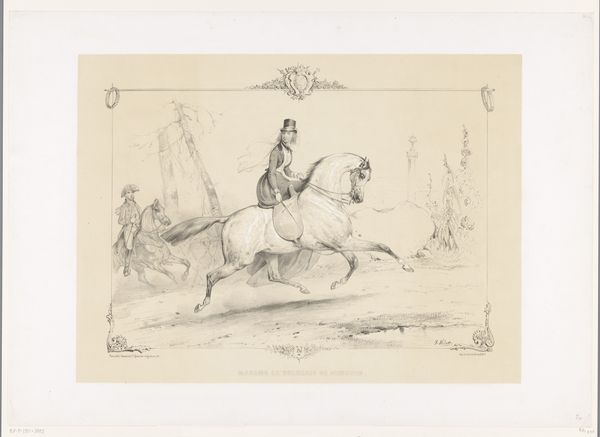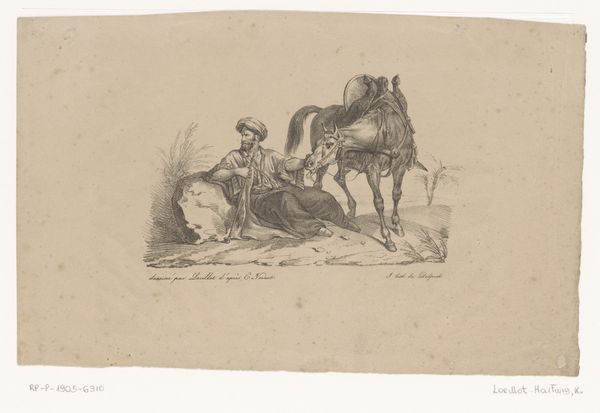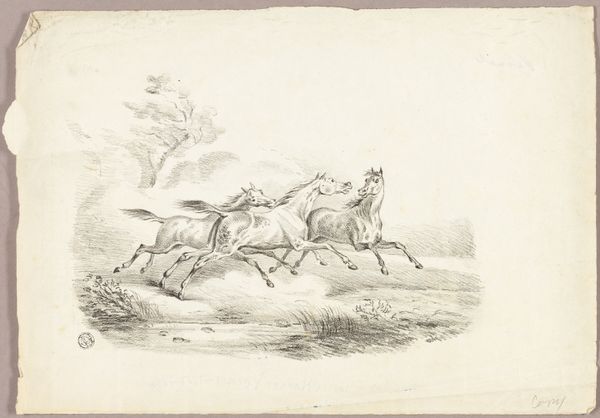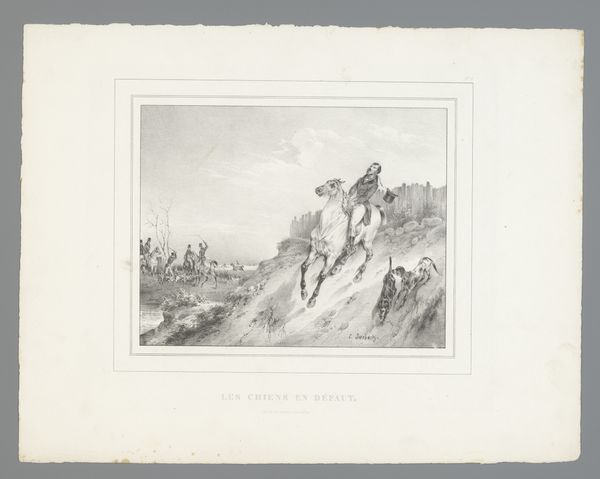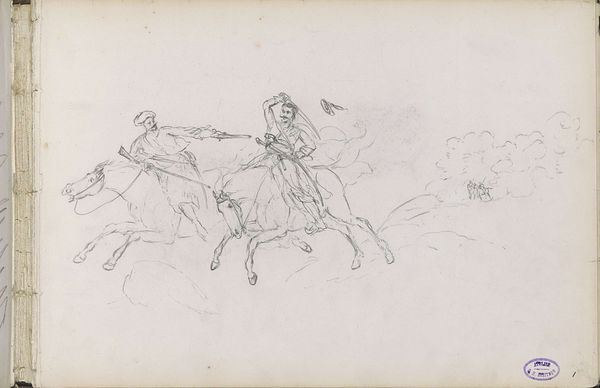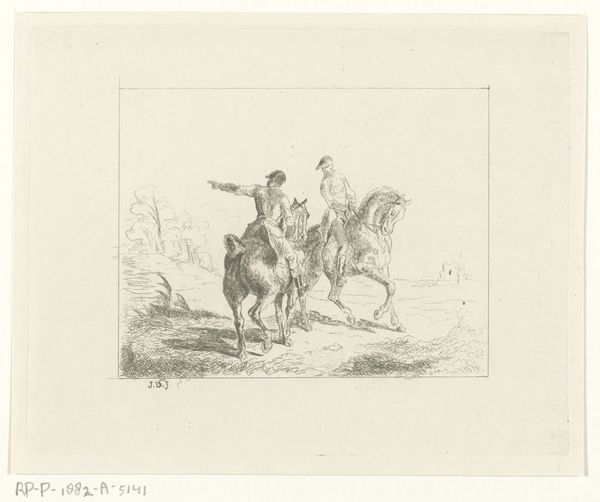
drawing, pencil
#
pencil drawn
#
drawing
#
figuration
#
pencil
#
19th century
#
genre-painting
#
history-painting
#
academic-art
#
realism
Dimensions: height 150 mm, width 230 mm
Copyright: Rijks Museum: Open Domain
Curator: Ah, here's a poignant scene. This is Ferdinand Ernst Lintz's "Ruiter wordt door infanterie neergeschoten"— "Horseman Shot Down by Infantry"—created around 1852. It’s a pencil drawing, all hushed tones and dramatic implications. Editor: There’s a definite sense of chaos caught mid-storm here. That horse is a study in terror and power, rearing up, almost a desperate symbol in this scene of violence. It is an eloquent use of pencil and line, isn’t it? The image, while static, screams movement and disruption. Curator: Absolutely. Lintz's academic and realist style gives us a window into 19th-century history painting, steeped in narrative. We are not seeing an idealized battle, but a moment of defeat, vulnerability exposed through genre-painting. What strikes you about the cultural memory at play here? Editor: For me, it's the universal imagery of the fall, both literal and symbolic. A horse, often associated with power and nobility, being brought down speaks to a greater, more enduring understanding of conflict and downfall. Notice how the background fades—like figures dissolving in a nightmare? The event becomes archetypal: leader toppled by faceless crowd, an almost primal struggle. Curator: The facelessness adds another layer. It shifts focus from individual heroism to the collective force. You sense the shift in military tactics too; infantry challenging the dominance of cavalry. It also says a great deal about class, the tension between aristocrat and the masses. Editor: Precisely. Even in its smaller scale as a pencil drawing, the drawing is infused with cultural symbolism. Consider the man's armor—reflects historical connotations of chivalry. He is almost crushed beneath that symbolic weight and by historical shifts towards an inexorable equality that threatened the aristocratic norms and systems. Curator: Yes! And think of how the rider’s position—falling, vulnerable—contrasts so strongly with the power inherent in the horse. Perhaps Lintz aimed to portray the fleeting nature of dominance or heroism amidst such strife. The way the lines create textures on both horse and armor, too, really heightens that contrast. Editor: Ultimately, this artwork encapsulates moments when perceived stability cracks and reality shatters. The vulnerability is in plain view, immortalized within this moment of downfall. It invites a dialogue that transcends the confines of genre, touching upon our deep-seated fears and fascinations. Curator: So well observed. A quiet pencil drawing with the resounding echoes of history… and the ever-present shadows of human conflict.
Comments
No comments
Be the first to comment and join the conversation on the ultimate creative platform.
